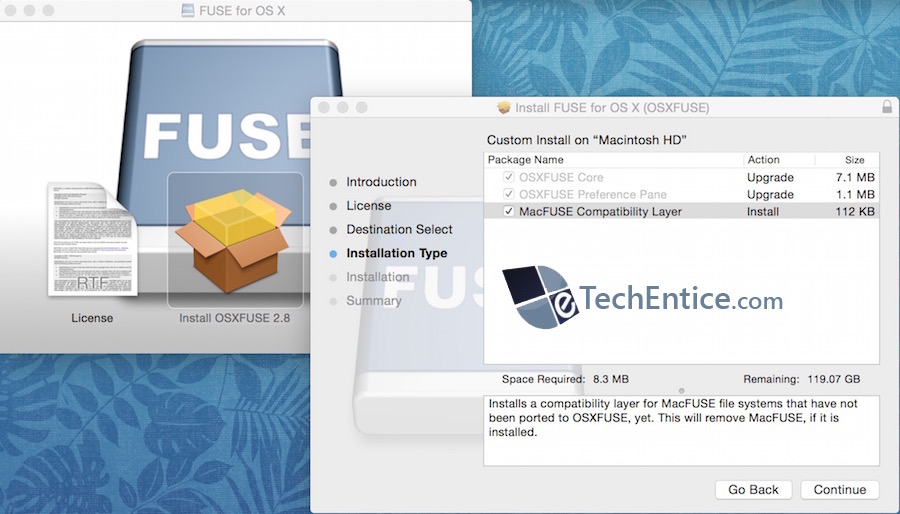

Once you are done, press Control X then Y then ENTER to save the file.
#APT GET NTFS 3G CODE#
This is the code you need to put into the file. This opens the FSTAB so we can edit it with the auto mounting information. So the following string needs to be inserted on a new line under the exisiting ones, replacing the following with your details. Here we need to add the information we have gathered so far and before we reboot, we are going to test that it worked so we don’t cause the raspberry pi to fail at boot up. We need to take note of both the uid and the gid numbers. It will probably be uid=1000 and gid=1000. With our Partition ID, we can now add some information to the FSTAB so our drive will automatically boot each time, but first we want to figure out the ID of our current logged in user. My particular one was 770bcbdc-01 and that’s what you would need to write down. You should see a section called PARTUUID=”000xxxxx-00″ on the device line. It has happened to me before and caused my whole Raspberry Pi to fail at boot up so this step is important. This will let us mount the USB Hard Drive even if the device changes from sda1 to say sdb1. Now we know our device partition, we need to get what is know as the Partition ID. Mine shows 1.8T as the biggest partion so I know that sda1 is the one that I want. This could be sda2, sda1 or even sdb2 so look at the size and whichever is bigger should be the correct one. To do this, we need to check out fdisk and see which partition is the one we want to mount.

Now that we have the folder ready, we need to figure out what the hard drive partition is that we want to mount. To keep it organised, we will create this in the directory mnt and we will call the folder usbhdd to keep it simple. Next we need to create a directory on the Raspberry Pi that will act as the mount point for the USB Hard Drive. Once that’s done, we will do a quick reboot to make sure everything sticks in place.
#APT GET NTFS 3G INSTALL#
Auto Mount an NTFS USB Drive on Raspberry Piįrom the Command Line, we need to first make sure Raspbian is completely up to date and install the neccesary package to make NTFS work which is called NTFS-3G.


 0 kommentar(er)
0 kommentar(er)
